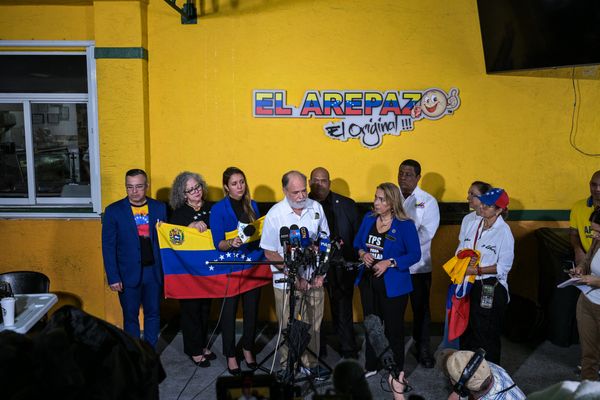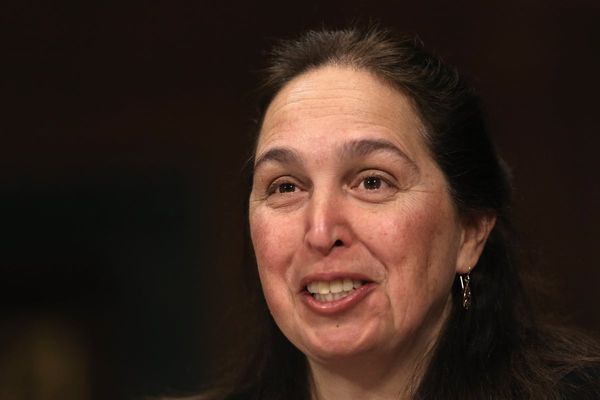At the beginning of winter, Ken Macken took the highway out to Chinchilla in Queensland's Western Downs to buy a 40-year-old ute — a dodgy-looking Datsun upholstered with strips of carpet and sheet metal.
By the time spring arrived, Mr Macken had converted the retro clunker into a snazzy little electric vehicle (EV), able to surge to 100 kilometres per hour in under six seconds (something the petrol version would have never achieved).
He dubbed the two-door electric runabout the "Dasla".
"There's a lot of people out there who love their classic cars, but don't want the issues of internal combustion engines," he says.
From suburban garages to professional workshops, Australians are popping car bonnets and stripping out petrol and diesel motors, fuel tanks and gear boxes, mufflers and exhausts.
In place of these greasy, soot-stained parts, they're installing banks of lithium-ion batteries and small, but powerful, electric motors.
Though not cheap, EV conversion, or "electro modding", is booming in popularity.
Often, it's a way of breathing new life into beloved older models — a way of having a classic car without the fumes and breakdowns.
Some hope this change is just the start: they look forward to a time when conversions can be done cheaply and at mass scale. They believe that at least some of the petrol cars being sold today may see out their time on the road as converted electric ones.
So what does conversion cost and could it work for your car?
Interest in EV conversions rising
For years, people weren't interested in EV conversions. The change seemed to happen overnight, about 18 months ago, says Russ Shepherd, a director of a Melbourne EV conversion garage.
"We kept getting asked and asked and asked," he says.
These weren't the usual hobbyists who "want to put a forklift motor into their Hyundai Getz", but people after "high-end conversions".
At the same time, James Pauly from Caboolture in Queensland was noticing a similar phenomenon.
His converted VW Beetle was suddenly getting a lot of attention at car meets. There were more EVs on the roads, too. A tipping point was reached; a novel gizmo became the future of cars.
"People realise this EV thing is serious, it's not going away," says Mr Pauly, who runs a business converting EVs.
As he points out, replacing a petrol engine with an electric motor is just another form of hot-rodding; incorporating a newly released auto-technology into a classic car, as a custom modification.
"I don't usually get customers who aren't a car enthusiast," he says.
"One of my latest customers came to enquire about a VW Beetle conversion kit and they arrived in their bright orange V8 hot rod."
So what does this all cost?
It's not cheap, warns Chris Jones, national secretary of the Australian Electric Vehicle Association (AEVA).
"If you want something that goes more than 150km to a charge and maintains a highway speed, you're going to be spending north of $30,000," he says.
Mr Macken, for instance, spent about $40,000 on batteries, the electric motor and other parts to both restore and convert his Datsun ute.
"That's restoring a car back to brand new," he says.
The Dasla has a range of about 180km, or less than half that of a $44,000 new EV.
The biggest cost, says Tim Harrison, who's converted a 1965 Ford Cortina in Brisbane, is the batteries, which are in exceptionally high demand right now.
"I sourced my own batteries by salvaging them from a wrecked Tesla Model X that I bought, but not everyone can do that," Mr Harrison says.
"If I had to source them elsewhere, the conversion would have added up to about $30,000."
Mr Harrison expects the cost of conversions will fall as batteries get cheaper and new EV sales swell the supply of second-hand parts.
"In theory, everything points to it getting cheaper," he says.
Which cars are best to convert?
Not all cars are suitable for conversion, according to Mr Jones.
The key consideration is weight: if you start with a heavy chassis, you'll need to install more batteries to get enough range.
For this reason, many classic Australian cars, like Holden Kingswoods or Toranas, are considered unsuitable.
"Old Australian vehicles are not light," Mr Jones says.
Japanese-made cars (like the Datsun) are among the most sought-after.
To be compliant in Australia, the gross mass of the converted vehicle cannot exceed what the car was designed for.
Small, lithium-ion batteries might weigh a lot but their weight, plus the engine, typically balances out the weight of the removed combustion-engine parts.
"It's a good idea to engage with a compliance engineer before you get started," Mr Macken says.
Another consideration is historical value, says Mr Harrison. Ripping out the engine of a rare Porsche may be a bad idea.
VW Beetles are a popular option, says Mr Pauly, who has converted three in his workshop, and sold about 20 conversion kits with batteries and motor for owners to do the work themselves.
Choosing a model that has been converted before can save time and avoid unseen complications.
"We can convert a Beetle in less than a month," he says.
Australia's only electric Commodore?
But some people are happy just to convert the car they have.
In the best tradition of DIY self-belief, Les Cook, a 74-year-old retired Queensland dairy farmer, has converted a 2001 Holden Commodore.
The conversion process has been a steep learning curve. At one point while installing the batteries, Mr Cook dropped a spanner across a live terminal and saw "bolts of frigging lightning".
"It frightened the shit out of me," he says.
The incident convinced him to outsource the wiring to an auto electrician in Cairns.
Later, he found he had to install an app to work the EV car charger. The only problem was he didn't have a smartphone.
After four years, the work is done. Perhaps the only electric Commodore in the world is now parked in a "dairy mate's shed behind a heap of hay" in the back blocks of northern Queensland.
Whenever Mr Cook takes it out for a spin, the car turns heads. EVs are a rare sight in this part of Queensland.
"People ask me, 'Is that an electric Commodore?' Interest in it is phenomenal," he says.
Recently, while recharging at the roadside near Innisfail, the police stopped.
Cheap, mass conversions of petrol vehicles?
Conversions are not currently economical for most people, but Mr Shepherd believes standardised "cookie cutter" conversion kits could drastically reduce the cost.
He hopes this could spawn a new Australian auto industry.
"I don't think it's out of the question to say we are already manufacturing cars again in Australia," he says.
Nine Australian and New Zealand EV specialist garages have formed a "collaborative group" to create "the knowledge to help save millions of fuelled vehicles from landfill'.
This alliance believes that petrol and diesel cars being bought now may be hard to resell in coming years, once people switch to EVs, which are falling in price and have lower running costs.
Governments may also encourage the switch to EVs to reduce greenhouse gas emissions.
The owners of cars with combustion engines would then have to choose between scrapping or converting them.
Organisations that operate fleets of specialist or modified vehicles, (such as four-wheel drives fitted with special wheels to travel on railway tracks, and which cannot be easily resold), are already faced with this problem, Mr Shepherd says.
"These vehicles have a useful life of up to 10-20 years, but the owners have been told they have to decarbonise," he says.
The interest in classic car conversions is being seen worldwide.
A US company has recently developed a self-contained EV chassis which it says is designed to fit almost any classic car, and would radically streamline the conversion process.
There is also growing interest in the UK. Former footballer David Beckham has invested in a high-end electric car conversion firm that charges up to 500,000 British pounds ($925,000) for an electric Rolls-Royce.
Conversion can jeopardise warranty
Fleet managers are under pressure to decarbonise and switch to EVs, confirms Mace Hartley, executive director of Australasian Fleet Management Association, a peak industry body.
But EV conversion jeopardises the manufacturer's warranty, Mr Hartley adds.
"Large fleets won't touch it," he says.
Instead, fleet managers will probably just sell their combustion engine vehicles to the public over the next decade (if the cars aren't severely modified) and replace their fleet with new EVs.
Without the support of fleet managers, mass conversion of combustion vehicles is unlikely to happen soon.
Mr Shepherd's Melbourne workshop will be electrifying about a dozen cars this year, many of them luxury or classic vehicles.
Among them is a DeLorean, the gull-winged car from the Back to the Future movies.
It's a fitting emblem for the appeal of classic EV conversions: combining the looks of the past and the technology of the future.
"We have a Subaru Brumby coming in and a Porsche 911," he says.
"We're taking over the workshop next door, but soon we'll need new premises."
Back in Chinchilla, Mr Macken says his next project is a 1970s Ford Bronco EV.
Meanwhile, in Brisbane, Mr Harrison is converting a 1973 Kombi, while his Instagram page teases a future "retirement project": a rust-eaten 1940s Pontiac Streamliner tucked away in a shed, "patiently waiting for her resurrection".
"Your time will come, dear," he writes.







